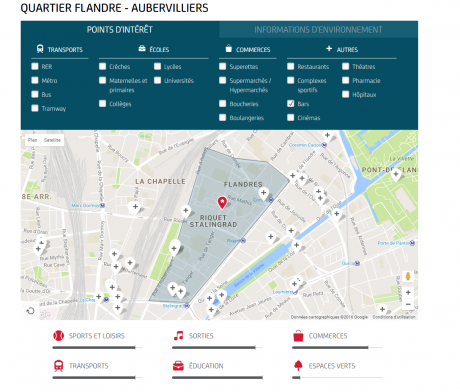Renewable energy is growing exponentially in recent years thanks to new energy transition policies based on the promotion of renewable energy, technological advances, the large-scale deployments, the monopolization of the renewable industry, the significant fall in prices in the world market, and of course the global awareness of the multifaceted risks of climate change and the urgent need to curb carbon emissions into the atmosphere.
With a growth rate of 8.5% in 2015 (newly installed 153 gigawatts in 2015), the renewable installed capacity in 1985 reached a record GW, according to the International Renewable Energy Agency (IRENA) (1) driven mainly by solar with 26% (47 GW newly installed in 2015), a cumulative installed capacity of 219 GW of solar photovoltaic and wind power with 17% (63 GW newly installed in 2015), a cumulative installed capacity of 416 GW . IRENA provides that the costs of onshore wind should decrease from 26% in 2025 compared to 2015, those of offshore wind (at sea) of 35%, while those of solar PV could fall 59%, which would allow renewable crossing the threshold of 40% of the total electricity generation by 2030. the same agency shows that in 2015 the number of direct and indirect jobs in the field of renewable increased 5%, or 8.1 million people worldwide and is expected to reach 24 million in 2030.
For its part, the report “New Energy Outlook 2016″, the consulting firm Bloomberg New Energy Finance (BNEF) (2), which made projections to 2040, shows the United States, renewable energy going from 14% in 2015 to 44% of the electricity mix in 2040, while in Europe they move from 32% in 2015 to 70% in 2040. This profound change in the global electrical system is driven by the continued decline in prices of solar and wind power technologies. From 2020, electricity from solar and wind renewable sources would be competitive in several countries of the world.
However, despite this dramatic development, solar and wind power are largely different from fossil fuels like coal, oil and gas, new energy sources such as nuclear and even other renewable energies such as hydropower and biomass where electricity is generated continuously, day and night. It can operate a nuclear power plant or coal in a continuous manner throughout the night, while we can not do it with a solar plant.
The production of electricity from solar and wind power is dependent on solar radiation and wind, respectively.
This variability or intermittent solar and wind was cited recurrently, often by the lobbies of conventional energy and nuclear, to suggest that the production of electricity from these sources energy can not exceed 15 to 20% of all electricity injected into the grid (electric grid or English). Yet new studies show that it is possible to achieve very high penetration rate of the production of solar and wind power in the network, such as the case in Portugal that operated with 100% of the wind, solar and hydro for four days last May and Texas, which reached a record 45% just with the wind. Such situations are repetitive in Germany where the renewable currently covers one third of the electricity production and could exceed 80% in 2050. For example, on May 8, solar and wind power covered more than 90% demand of electricity in the country. However, to spare an important penetration, smart and sophisticated technology network management (smart grid) and real-time response to the demand for electricity had to be deployed.
A fundamental change or a disruption in the electrical system management mode had to be operated in countries where renewable occupies more and more of the terrain and becomes competitive with fossil and nuclear energy.
The proliferation of storage technologies for large-scale energy, including storage batteries of electric current and the intelligent management of application / consumption of electricity or the electricity market (smart market) are all recommended solutions by experts to overcome the intermittent and random nature of solar and wind power and to allow an even greater deployment of these clean energy sources in the future. To better manage the network, the network operator must know, at any given time, how many solar and wind power will be fed into the grid and order, in case of excess, reducing the production of electricity from gas or other fossil fuels. Models and prediction tools for the production of renewable electricity that convert weather forecasting algorithms and non-linear functions are deployed to reduce unnecessary consumption of fossil and avoid emissions of greenhouse gases.
One way to solve the problem of intermittency of renewables lies in the storage of energy which is essential for increasing the share of renewables in the network. The batteries are used to store electrical energy generated by the systems to renewable energy sources when there is an excess and then return to the time of application. The large-scale energy storage remains today very expensive to deploy, but that should change, especially as even more significant penetration of renewable makes it more economically viable deployment because of the need for additional services that it can provide. New energy storage markets will be created and new models of fiscal incentives like nature for the use of storage systems to the network or residential scale (storage of energy generated by photovoltaic solar modules) will the day.
The report evaluates the BNEF battery market to $ 250 billion.
Another alternative would be the management of electricity according to the response to the request “demand-response”, that is to say attract large electricity consumers or group of individuals, qualified as “interactive grid” to lower consumption at key times of the day when the network is experiencing strong demand, with compensation mechanisms (special rates or fiscal or quasi-fiscal incentives). The development of smart markets and the means of ICT has also made this possible and viable solution. Electric vehicles could be another option electricity storage and management of peak consumption. It also cites the mobile photovoltaic “PV mobile” as solution of “back-up”. Electric cars will account for 35% of new vehicle sales in the world in 2040, 41 million cars, according to the report of BNEF.
In the digital era, technologies are advancing at such a speed that we suggest that it is very possible that smart grid technologies and energy storage become good medium-term market, as already the case for renewable, and will partner with solar and wind power to produce a simple grid.
Furthermore, the implementation of the Paris Agreement on climate change will be an opportunity for the development of green energy and development of energy storage technologies and smart grid management. This agreement aims to contain global warming below the limit of 2 ° C compared to pre-industrial times, putting in place support mechanisms for the deployment of clean energy and a regulation increasingly severe with the use of carbon energy sources. Algeria has adopted, on a voluntary basis, a renewable energy development program to generate 22,000 MW by 2030 and diversify its energy mix and preserve its export capacity of oil and gas. To deploy this ambitious program that aims to increase the share of renewables to 27% in the national electricity mix by focusing primarily on sources of intermittent renewables such as solar photovoltaic
(13,750 MW) and wind power (5010 MW), new technologies and digital solutions listed above should be necessarily included in its implementation.
The completion of this strategic objective inevitably will lead to a fundamental transformation of the national electricity system and its management. research centers and university laboratories should give importance to these multidisciplinary research projects that combine renewable with the Information and Communication Technology (ICT). The Renewable Energy Development Center (CDER), aware of this primordial energy issue for our country, has already made a priority in its strategic plan for 2020 by working hand in hand with relevant sectors so as to address these major technological challenges. The pilot stations, solar photovoltaic (1.1 MW), solar thermal (25 MW solar) and wind (10 MW), added to that the 20 solar power plants (343 MW) installed in the Highlands and the South should serve as experimental platforms to gain experience, develop skills and learn to better deploy the program outlined by the government. Regions where the share of renewable is important, as the case of Adrar, could be used to test these new intelligent network management technologies. Algerian authority fully versed in new technology will easily meet the challenges of the third revolution is that of renewable and digital. The economic sector eager to embark on this promising niche, creator of wealth and jobs, should also take these aspects into their business plan.
Reference
1) – http://www.irena.org
2) – http://www.bloomberg.com/company/new-energy-outlook/










